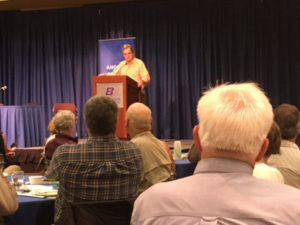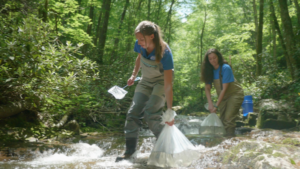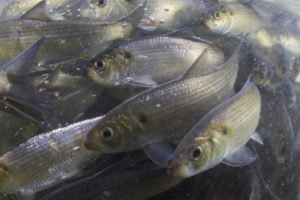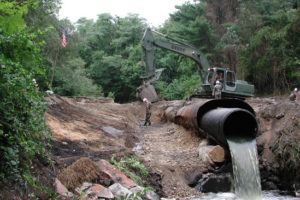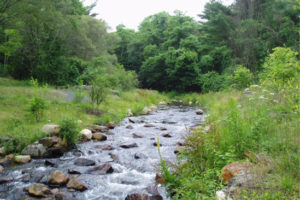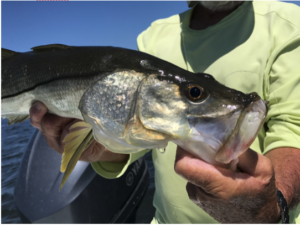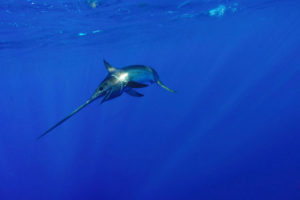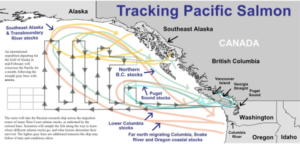Amendment 50 Gives Gulf States Stable Snapper Season
By DAVID RAINER
Alabama Department of Conservation and Natural Resources
from The Fishing Wire

Big Red Snapper
After a three-year struggle, saltwater anglers are on the cusp of a stable red snapper season with the approval of Amendment 50 by the Gulf of Mexico Fishery Management Council.
Amendment 50, which goes into effect in 2020 with the approval of the Secretary of Commerce, gives the five Gulf states control over each state’s snapper season, and it allows leeway in size and bag limits within certain federal guidelines.
“All of the Gulf states are excited to finally have this solidified and move forward with the management plans for the individual states,” said Scott Bannon, Alabama’s Marine Resources Director. “It’s a win for the red snapper stock and a win for the states.”
Bannon said state control of the snapper fishery was brought before the Council in 2016 to manage the recreational sector, which would have included the private recreational sector and the federal for-hire (charter) sector.
The 2016 and 2017 snapper seasons were painfully short under federal control. As a way to alleviate the impact on anglers and the Gulf Coast economies, the Gulf states were issued an exempted fishing permit (EFP) for the 2018 and 2019 seasons, and states were able to set their seasons under a total allowable catch for each state.
Alabama originally set its 2018 season at 47 days, but near-perfect weather and an increased enthusiasm for catching the state’s signature saltwater species forced Marine Resources to reduce the season to 28 days, which ended in an almost perfect catch-to-allocation result.
The way Alabama was able to ensure there was no significant overrun on the quota was through the Red Snapper Reporting System, more commonly known as Snapper Check. The mandatory reporting system allowed Marine Resources to monitor the catch and close the season in response to the larger-than-expected harvest numbers.
The success of the Snapper Check monitoring paved the way for the Council to approve Amendment 50.
“I think the fishery benefits from Amendment 50 because we have the ability, as individual states, of not exceeding our allocation of the quota,” Bannon said. “If you look at it from a stock perspective for the Gulf of Mexico and you were managing it as a whole and you had a perfect season, like last year, you had no way to put the season in check. Alabama alone would have consumed nearly half of the entire Gulf allocation if we had fished the whole 47 days. We would have fished it really, really hard, and the amount of fish we would have caught would have been tremendous. As it was, we closed it when we met the number of pounds and showed that we were responsible. I think this is much better for the anglers and the snapper stock. I think the EFP showed the states could come to some decisions about allocations, and that the states could manage seasons within pretty close tolerances.”
Bannon said the Gulf Council faced two challenges with state management of red snapper. First, where do the federal for-hire boats fit into the program? The Council decided to not include the federal for-hire in Amendment 50 and consider other options in the future if conditions change for the federal for-hire boats. Second, what allocations could the five Gulf states live with?
“These allocations were based on different factors like biomass and historical landings,” Bannon said. “So, the state directors used the EFP allocations as a starting point for Amendment 50.
“The EFP only allowed us to set the season within our allocation. Under Amendment 50, we received an increase in allocation from 25% to 26.298%, and that increase will be permanent. We also have in Amendment 50 the ability to set size and bag limits within certain parameters. Those are management tools to maximize the benefit for Alabama.”
When the initial EFP allocations were proposed, the totals did not equal 100% of the total allowable catch. Bannon said Florida was given the extra 3.78% because they were the final state to apply.
“They amended their EFP to get that extra allocation,” Bannon said. “We felt like that extra allocation should be negotiated. In the end, Alabama and Florida split that 3.78% under Amendment 50 because we’re the two largest consumers of red snapper. The other states were comfortable with that. It seems to be fair and equitable.”
Under the new amendment, each state creates their own plan. Alabama’s plan includes a 10% buffer as opposed to the 20% buffer under the federal system. The federal for-hire sector has not exceeded its quota for several years, and its buffer was reduced to 9%.
Alabama’s allocation of red snapper for the 2019 private recreational season under the EFP is 1,079,765 pounds. Alabama’s allocation for the 2020 season increases to 1,122,661 pounds if the private recreational sector doesn’t exceed its quota this year.
Bannon said most red snapper anglers are happy with the upcoming season, and he anticipates there could be some season adjustments when Amendment 50 goes into effect.
“Most of the responses I’ve received for the 2019 season is they were happy to get the June and July seasons and that the season was spread out enough that if the weather was bad they could go another weekend,” he said. “We know we still have concerns from the public that they would like more fishing time during the week. As we move forward in state management, that is always a possibility because we now have the flexibility to set the seasons.”
The 2019 season length is tentatively set for 27 days, starting June 1 with three-day weekends (Friday-Sunday) except opening weekend (two days) and July 4 week, which will be four days (Thursday-Sunday). The size limit and bag limit remain the same at two fish per person with a minimum size of 16 inches total length.
Bannon is planning to ask snapper anglers for assistance to keep Alabama’s unparalleled artificial reef program at the top. The loss of funding for research in those reef zones will prompt him to ask the Conservation Advisory Board to implement a reef fish endorsement beginning in 2020.
“The reef fish endorsement is set up to help fund some of the research conducted in the reef zones, because we’re losing some of the funding used for that research,” he said. “The research needs to continue, and we also need funds to support programs like Snapper Check, which we hope to expand into a better program.
“It’s designed as a user-based system that applies to the people who are participating in that fishery, including private recreational, charter for-hire and commercial fishermen. Another aspect of it is it defines the user group. It gives us a better idea, especially among private anglers, of how many people are fishing for reef fish off Alabama. That way we can have better directed surveys, which are targeted at people who participate in the fishery instead of just people who have saltwater fishing licenses.”
The endorsement fees would be $10 for private recreational anglers and $250 for commercial fishermen. The charter for-hire fees would depend on the size of the boat and number of passengers the vessel can carry.
Amendment 50 gives the five Gulf states much more control of their red snapper seasons. Photo by David Rainer
As for Amendment 50, Bannon said Alabama has already shown state management will work. The public is supportive, and he thinks that Secretary Wilbur Ross will quickly approve.
“As I said on the radio the other day, Alabama has 3% of the Gulf coastline and will receive 26.298% of the total allowable catch for the 2020 season and beyond,” Bannon said. “I think Amendment 50 is a success for the fishery, and I think it’s a success for the states because the states can now manage the seasons, size limits and bag limits that best suit their anglers.
